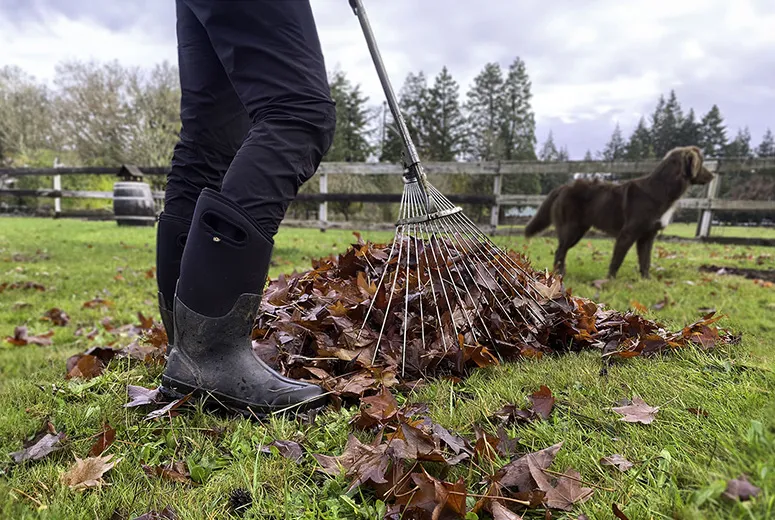When temperatures drop and work must go on, having the right footwear isn’t just a matter of comfort—it’s a critical component of safety and productivity. For those braving icy terrains, wet conditions, or prolonged exposure to freezing environments, safety rubber boots designed for cold weather are indispensable. This article explores the importance of insulated safety wellies, highlights what defines good quality wellies, and answers common questions to help you make an informed choice.

Why Choose Safety Wellies for Cold Weather Work?
Cold weather poses unique challenges for outdoor workers, from frostbite risks to slippery surfaces. Safety wellies are engineered to address these hazards head-on. Unlike standard boots, these specialized footwear options combine insulation, durability, and protective features to keep feet warm, dry, and secure.
Insulation Matters
The core advantage of insulated safety rubber boots lies in their ability to retain heat. High-quality thermal linings, such as Thinsulate™ or fleece, trap body warmth without adding bulk. This ensures mobility isn’t compromised, even during long shifts.
Slip Resistance and Traction
Cold weather often brings ice, snow, and mud. Safety wellies feature deep treads and anti-slip soles to prevent accidents. Reinforced grips provide stability on uneven terrain, reducing the risk of falls.
Waterproof Protection
Wet feet are a recipe for discomfort and hypothermia. Good quality wellies are crafted from natural rubber or advanced synthetic materials that create a waterproof barrier. Sealed seams and high shafts prevent moisture ingress, keeping feet dry in puddles or slush.
What Defines Good Quality Wellies?
Not all boots are created equal. Good quality wellies stand out through their materials, construction, and attention to detail. Here’s what to look for:
Premium Materials
Durable natural rubber is a hallmark of safety rubber boots. It offers flexibility, resistance to cracking in low temperatures, and long-lasting performance. Cheaper alternatives may use PVC, which becomes rigid in the cold.
Ergonomic Design
Comfort is key for all-day wear. Look for features like cushioned insoles, adjustable straps, and contoured footbeds. Good quality wellies often include breathable linings to prevent sweat buildup, which can lead to chilling.
Safety Certifications
Reputable safety wellies meet industry standards for puncture resistance, electrical hazard protection, and toe protection (e.g., steel or composite toes). Certifications like ISO or ASTM indicate rigorous testing.
Key Features of Insulated Safety Rubber Boots
When shopping for cold-weather footwear, prioritize these essential features to ensure optimal performance:
Thermal Efficiency
Insulated safety rubber boots often incorporate layered linings. For extreme cold, boots rated to -40°C (-40°F) are available. Reflective strips can also enhance visibility in low-light conditions.
Reinforced Toe and Heel
A steel toe cap protects against falling objects, while reinforced heels add durability. These features are critical in construction, agriculture, or forestry settings.
Easy Maintenance
Good quality wellies are designed for easy cleaning. Smooth rubber surfaces resist mud buildup, and antimicrobial treatments prevent odor.
FAQs About Safety Wellies, Good Quality Wellies, and Safety Rubber Boots
What Are the Advantages of Insulated Safety Rubber Boots Over Regular Boots?
Insulated safety rubber boots provide superior warmth, waterproofing, and hazard protection. Regular boots lack the specialized materials needed for extreme cold and workplace safety.
How Do Good Quality Wellies Prevent Frostbite?
By combining thermal linings and waterproof materials, good quality wellies keep feet dry and warm, reducing frostbite risks even in sub-zero temperatures.
Are Safety Wellies Suitable for All-Day Wear?
Yes! Ergonomically designed safety wellies with cushioned insoles and breathable linings ensure comfort during extended use.
Can Safety Rubber Boots Withstand Chemical Exposure?
High-grade natural rubber in safety rubber boots resists oils, mild acids, and other chemicals, making them ideal for industrial environments.
How Long Do Good Quality Wellies Typically Last?
With proper care, good quality wellies can last 2–5 years. Regular cleaning and avoiding prolonged UV exposure extend their lifespan.
Investing in insulated safety rubber boots is a smart decision for anyone working in cold, wet, or hazardous conditions. By prioritizing safety wellies with proven insulation, slip resistance, and durability, you’re not just protecting your feet—you’re enhancing productivity and peace of mind. Whether you’re navigating icy construction sites or muddy farmlands, good quality wellies deliver the performance you need to stay safe and comfortable, no matter how low the thermometer drops.
-
Stay Dry in Any Condition with WadersNewsJul.17,2025
-
Elite Performance with Camouflage Combat BootsNewsJul.17,2025
-
Dry and Comfortable with Green Rubber Garden ShoesNewsJul.17,2025
-
Convenient Protection with Foldable RainbootsNewsJul.17,2025
-
Comfort and Protection with Neoprene Work BootsNewsJul.17,2025
-
Brighten Rainy Days with Floral Rain BootsNewsJul.17,2025
-
Safety Wellies: The Ultimate Combination of Protection, Comfort, and VisibilityNewsJun.19,2025











